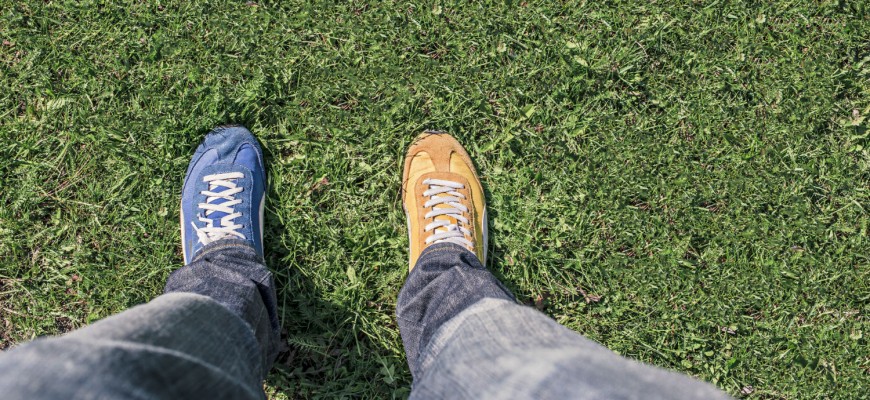There is only one rule when it comes to types of Yom Kippur shoes: no leather. Everything else is kosher, from Biblical substitutes like wood and palm leaves to materials Moses never dreamt of: plastic, polyester, canvas and pleather are all technically safe under Jewish law. Some rabbis may grumble at modern styles and comforts bypassing Jewish law, but it’s not our fault if the Torah assumed we’d still be wearing straw sandals in 3,000 years.
What Types of Yom Kippur Shoes are there?
So what types of Yom Kippur Shoes exist? Some are comfortable but ugly, others match a dress but aren’t great for long-term wear. Here are some conventional substitutes that have gained popularity throughout the years:
- Sneakers – The most common solution for a number of years, sneakers are comfortable for hours. The problem, of course, is that they don’t match formalwear, which some modern synagogue-goers consider inappropriate.
- Crocs – A recent addition to the list, those old plastic clogs aren’t too common in society unless you’re a child at the beach. But Crocs produces a number of leather-free, breathable and comfortable shoes including sneakers and boat shoes; however, some congregations dismiss them as looking too informal, and they clash
- Toms – These hemp/rubber slip-ons aren’t the most formal, nor the most cushioned—but some Jews prefer them as Yom Kippur shoes for that very reason. They also come in modest solid colors as well as stylish plaid patterns, though the color fades somewhat quickly.
- Vans – Similar to Toms, Vans are lined by canvas rather than hemp, with thicker rubber bottoms and traditional white laces on top. While Vans are a high-school rite of passage for most, that doesn’t stop Jews from adopting them as Yom Kippur shoes when the time comes.
- Vegan fashion – A number of eco-conscious celebrities like Natalie Portman and Stella McCartney have begun producing high-end vegan shoes for high-end prices, which have the added benefit of looking chic safe as Yom Kippur shoes. Faux-suede and pleather dominate these runways with physical outlets in New York. Of course, if you can pony up several hundred dollars for a pair of shoes, you might want to wear them more than once per year.
Either option poses moral dilemmas: shoes that clash (sneakers, crocs, Vans) tend to be physically comfortable, while those that blend (any high-end vegan style) eschew the luxury problem by disguising themselves as leather, perhaps even misleading fellow congregation members. Ultimately, it depends on your personal values, and how you choose to atone before God on this holy day.
What shoes do you wear on Yom Kippur? If you’re like us, and don’t think religion and fashion should be mutually exclusive, like this page on Facebook or follow us on Twitter to be notified of the top styles for women, men, boys, and girls in 2014.

